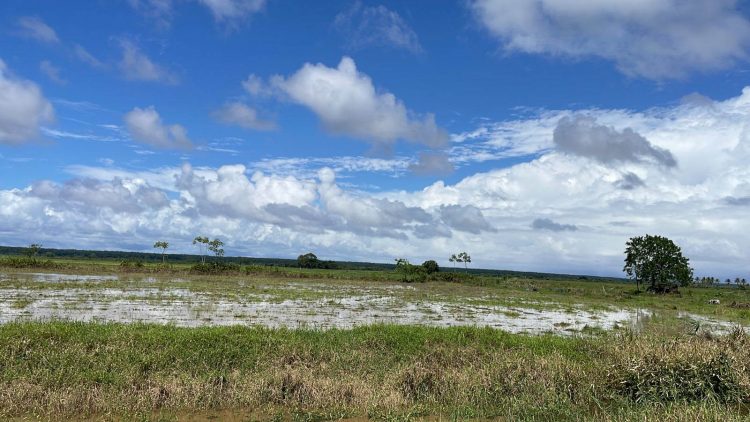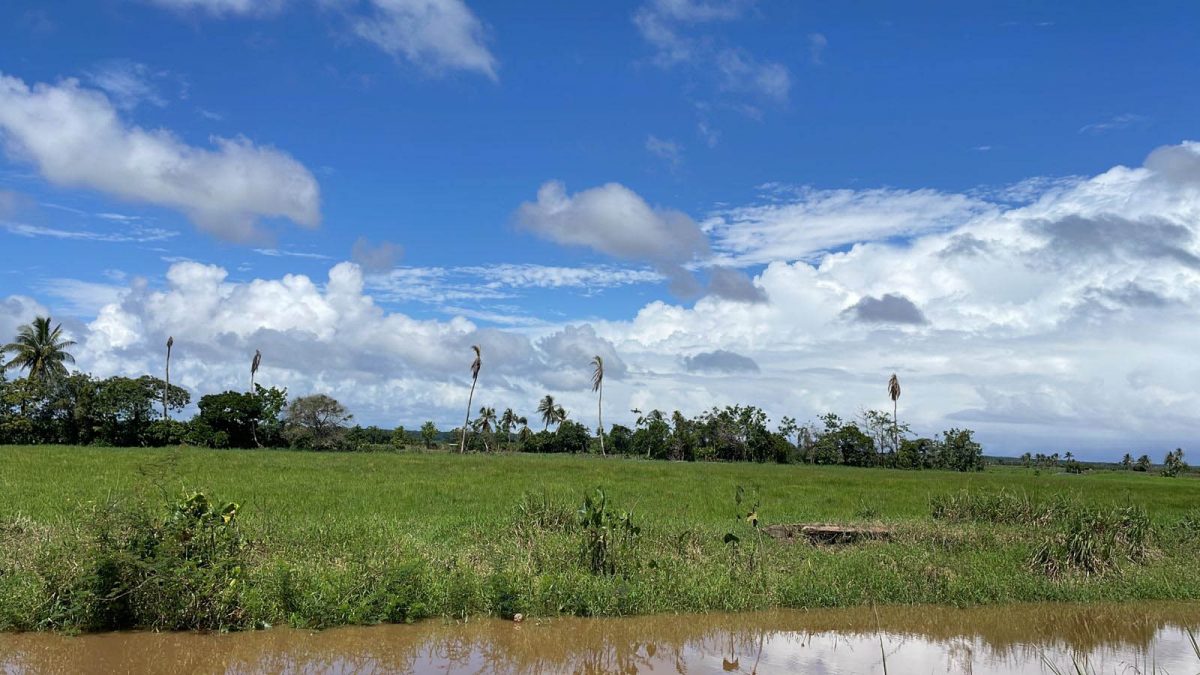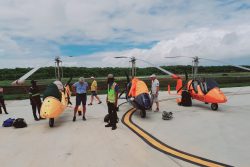From a distance, rice farmer Jagdesh (only name given) stands pointing at lands that were once bountiful and suitable for rice cultivation on the island of Leguan in the Essequibo River.
Lands for the past three to four crop cycles have been abandoned by farmers because of changing weather patterns on the island. Cultivating rice has become tougher, pushing traditional farmers to find alternative means of survival. “If you look across there (pointing to the empty fields), all there used to be rice fields waiting to be cut or already prepared for the next crop around this time,” Jagdesh explained as he spoke of the challenges they have been facing due to unfavourable weather conditions.
During a visit to the island in December, from a drive around it was observed that many farmers have abandoned their farmlands. The unfavourable weather patterns have led them to rack up losses crop after crop.

“I planted seven acres and my son planted a bit more but we couldn’t reap because the rain was too much. We had to just watch the rice go bad. If we had put the combine in the fields we won’t be able to go back for the next few crops,” a frustrated farmer on the island, who didn’t want to be named said.
Rice farming in Guyana requires much labour. The lands are first cleared of weeds and tilled in preparation for the sowing of paddy. The field is flooded after and water levels are monitored as the plants grow. This is followed by continuous monitoring and application of pesticides and fertilisers until harvesting.
“It has become difficult for us to plan because we don’t know what lies ahead. What we are seeing, has to be climate change. Because here we’ve been farming for years this is what our parents brought us up on,” another farmer injected.
The unpredictable weather pattern has left many farmers losing on the crop and the continuous heavy rainfall has left several in debt. Younger farmers have been forced to reconsider alternatives to provide for themselves and their families.
“We cannot continue to invest or not get back money to pay our debts. It’s frustrating. It is hard because the bank doesn’t want to hear you’re not reaping rice when it’s time to pay up,” Jagdesh pointed out.
A few farmers have to transition to livestock and cattle rearing. Some rice fields have been converted to pastures as farmers explore alternatives to supplement their income. A handful of others who continue to plant rice have experimented with bananas alongside rice to cushion the losses in the crop season.
The farmer said they saw this as a viable option since those crops are likely to withstand the extensive rainfall.
With rice being the main income earner for residents on the island, traditionally over 2000 acres of rice would be cultivated per crop season. Now plagued with intensive rainfall, farmers have reduced cultivation drastically. In the last crop, less than 2000 acres were planted and approximately 230 acres were recorded as lost. That acreage, a source within the rice industry explained, accounted for approximately $20 million in losses. Paddy was sold at $3700 per bag.
The source further explained that due to the impacts of rainfall last year, less farmers have returned to cultivate rice this year. “We have about ⅓ of the total lands on the island cultivated…” he said.
However, the situation on the island is not unique, along the Essequibo Coast, farmers were also impacted by extensive rainfall.
In Berbice, Regions Five’s and Six’s productivity also dropped, and the two of the largest rice cultivating belts have also been hit by unfavourable weather conditions. President of the Guyana Rice Producers Association Lekha Rambrich said this has been one of the years they experienced low yields due to the rainfall.
Rambrich, who is also a rice farmer and knowledgeable about the industry in Berbice explained that they too experienced excessive rainfall preventing many farmers from being able to prepare their lands in time for cultivation. He stated that unpredictable and abnormal rainfall has been occurring for the past three years.
“The lands become so saturated you cannot go into reap nor you cannot go into preparing it… We have seen rain falling in April and October when normally it just drizzles but these past years it has been continuous,” he pointed out.
From predictions, this crop season is expected to be dry and farmers are hoping the predictions are true as it would be favourable to them and allow farmers who have paused planting to prepare their lands for the next crop.
Since the change in weather conditions, there has been a significant decrease in rice production. He said from a total of 235,000 acres of rice lands only 180,000 is being cultivated in this crop.
“The weather condition has been so severe farmers who suffered losses were not able to return right away because they didn’t have the money to go back and prepare the lands. Even when you don’t make large profits you go back and prepare the land for the next crop but if you keep counting losses you will not be able to farm,” he said,
Additionally, he pointed out that with low production, millers are also unable to sign new contracts to keep their markets or go after new markets.
Meanwhile, while there are some varieties of rice such as the GRDB15 and 196 that can withstand climate impacts, farmers opt for varieties that provide higher yields like the GRDB 16 and 10.
Financing
With such major losses occurring at once, questions have been raised as to whether it is time for a fund to be established to support the industry.
Rambrich, while supporting the idea, said it is very technical as farmers are barely profiting from their cultivation and might need help to contribute to the fund. He however noted that in a government-sponsored fund, where farmers can access loans and grants, some might not want to repay.
At the moment, Minister of Agriculture Zulfikar Mustapha said there is no fund in place to support farmers who suffered as a result of climate change.
However, he stressed that through the Guyana Rice Development Board, there is funding to assist farmers through initiatives other than cash handouts.
This story has been done in collaboration with Climate Tracker and the Open Society Foundations through the Caribbean Climate Justice Journalism Fellowship.










